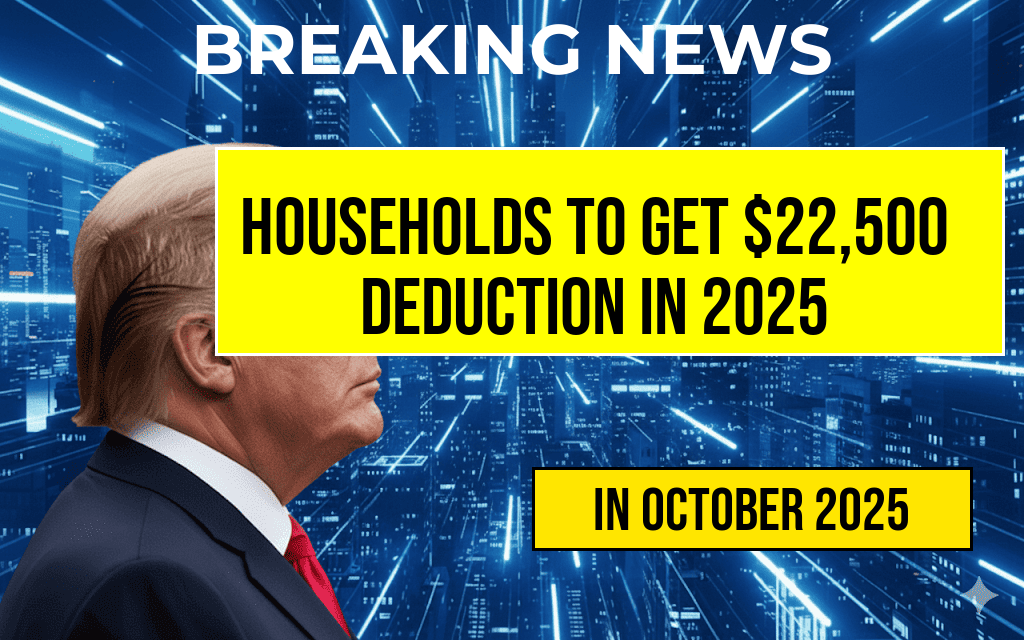The Internal Revenue Service (IRS) has announced a significant update for heads of household regarding the standard deduction for the 2025 tax year. The standard deduction will rise to $22,500, reflecting an increase of $600 from the previous year. This adjustment is part of the IRS’s annual inflation update, which aims to keep pace with rising living costs and provide tax relief to American families. The increase is particularly beneficial for the heads of households, who often bear the primary financial responsibilities for their families. This change not only impacts tax liability but also influences broader financial planning for millions of taxpayers across the nation.
Understanding the Standard Deduction Increase
The standard deduction is a key component of the U.S. tax system, allowing taxpayers to reduce their taxable income. For heads of household, the increase to $22,500 means that they will have a higher income threshold before they start paying federal income taxes. This adjustment can significantly lighten the tax burden for many households, especially in an economic climate characterized by rising costs.
Implications for Taxpayers
- Increased Tax Savings: With the standard deduction rising, heads of households can save more on their taxes, effectively reducing their overall tax bill.
- Impact on Filing Status: This increase reinforces the importance of the head of household filing status, which offers more favorable tax rates compared to single filers.
- Encouragement for Tax Planning: The increase provides an opportunity for taxpayers to reassess their financial situations and engage in proactive tax planning.
IRS Inflation Adjustments: A Broader Context
The IRS adjusts tax brackets and deductions annually to account for inflation, which has been particularly relevant in recent years due to fluctuating economic conditions. The increase in the standard deduction for 2025 is part of a larger trend aimed at providing relief to taxpayers. In 2023, the standard deduction for heads of household was set at $21,900, marking a steady rise over the past few years. This strategic adjustment is designed to help families maintain their purchasing power amidst inflation.
Comparison of Standard Deductions Over the Years
| Tax Year | Standard Deduction | Increase from Previous Year |
|---|---|---|
| 2019 | $18,350 | – |
| 2020 | $18,800 | $450 |
| 2021 | $18,800 | – |
| 2022 | $19,400 | $600 |
| 2023 | $21,900 | $2,500 |
| 2025 | $22,500 | $600 |
What This Means for Future Tax Filings
The increase in the standard deduction is expected to affect tax planning strategies for many households. Taxpayers may find it beneficial to consult with tax professionals to navigate the implications of this change effectively. Additionally, families should consider how the increased deduction aligns with their overall financial goals and budgeting practices.
Next Steps for Taxpayers
As the 2025 tax year approaches, heads of households should prepare for the changes in their tax filings. Here are some recommended steps:
- Review Financial Goals: Assess how the increased deduction impacts your overall financial strategy.
- Stay Informed: Keep up with IRS updates and changes to tax laws that may affect you.
- Consult a Tax Professional: Consider working with a tax advisor to optimize deductions and credits based on your financial situation.
For further information, taxpayers can visit the official IRS website at IRS.gov or refer to financial resources like Forbes for detailed insights on tax strategies and planning.
Frequently Asked Questions
What is the new standard deduction amount for heads of household in 2025?
In 2025, heads of household will receive a standard deduction of $22,500, which is an increase of $600 from the previous amount.
How does the standard deduction increase affect taxpayers?
The increase in the standard deduction allows heads of household to reduce their taxable income, potentially lowering their overall tax liability.
When will the new standard deduction take effect?
The new standard deduction for heads of household will take effect in 2025 during the tax filing season for that year.
Who qualifies as a head of household for the standard deduction?
To qualify as a head of household, a taxpayer must be unmarried, pay more than half the cost of maintaining a home, and have a qualifying dependent.
Is the standard deduction for heads of household expected to change again after 2025?
Future changes to the standard deduction are determined by the IRS and could be influenced by inflation or tax policy changes, so it’s uncertain if it will change again after 2025.






